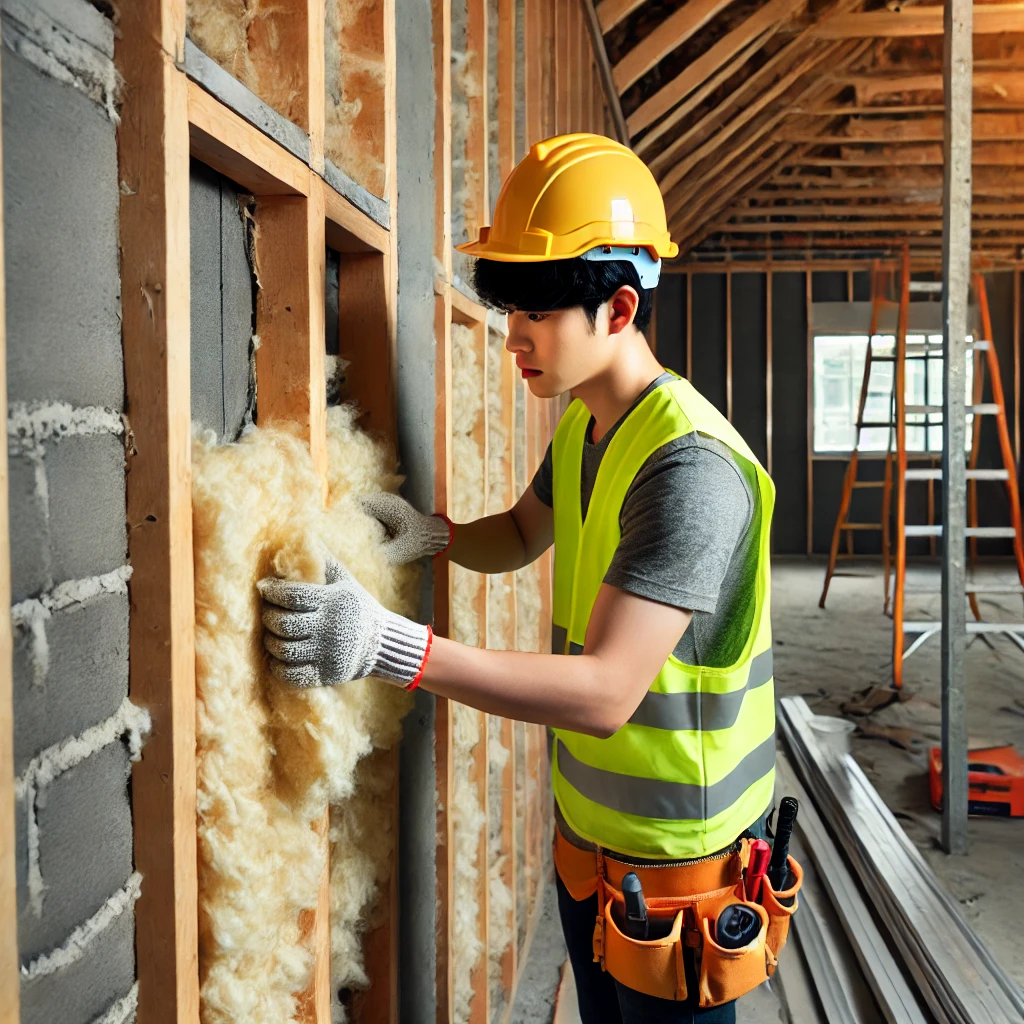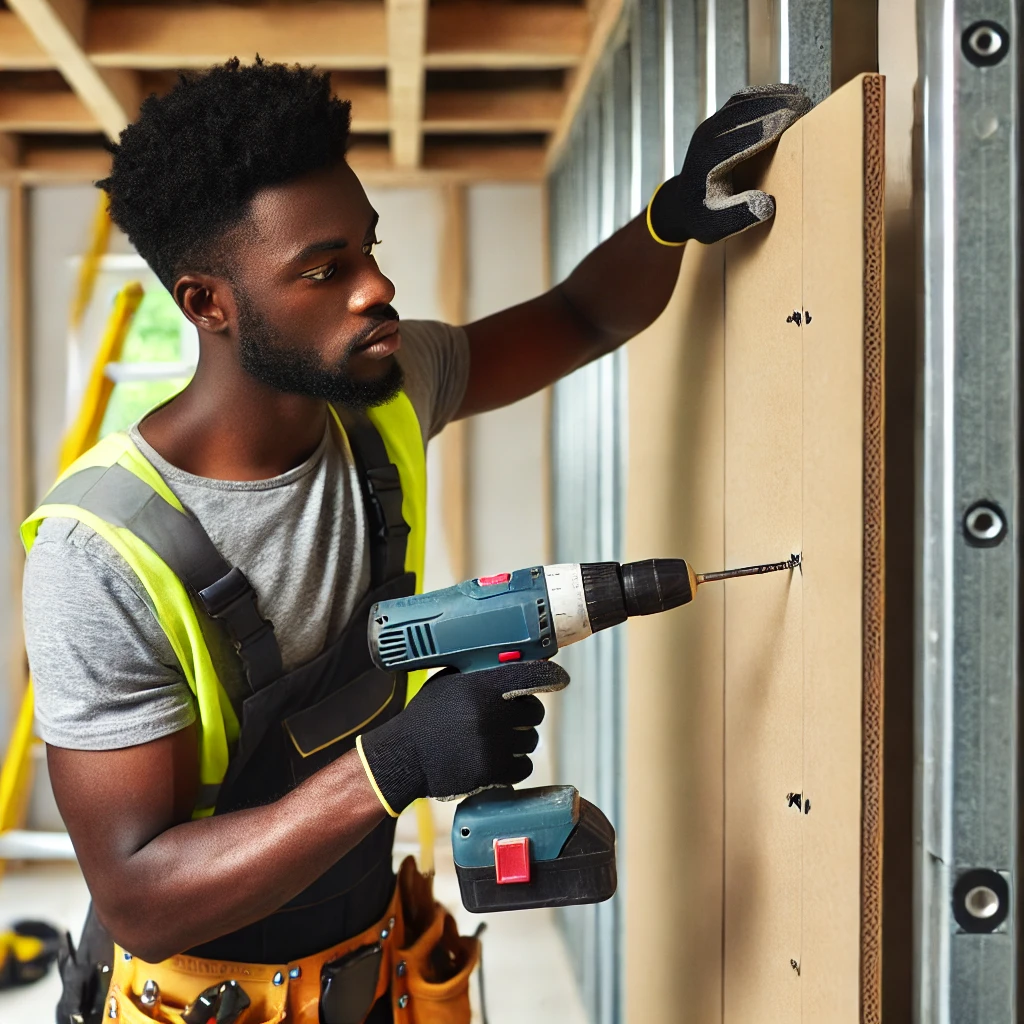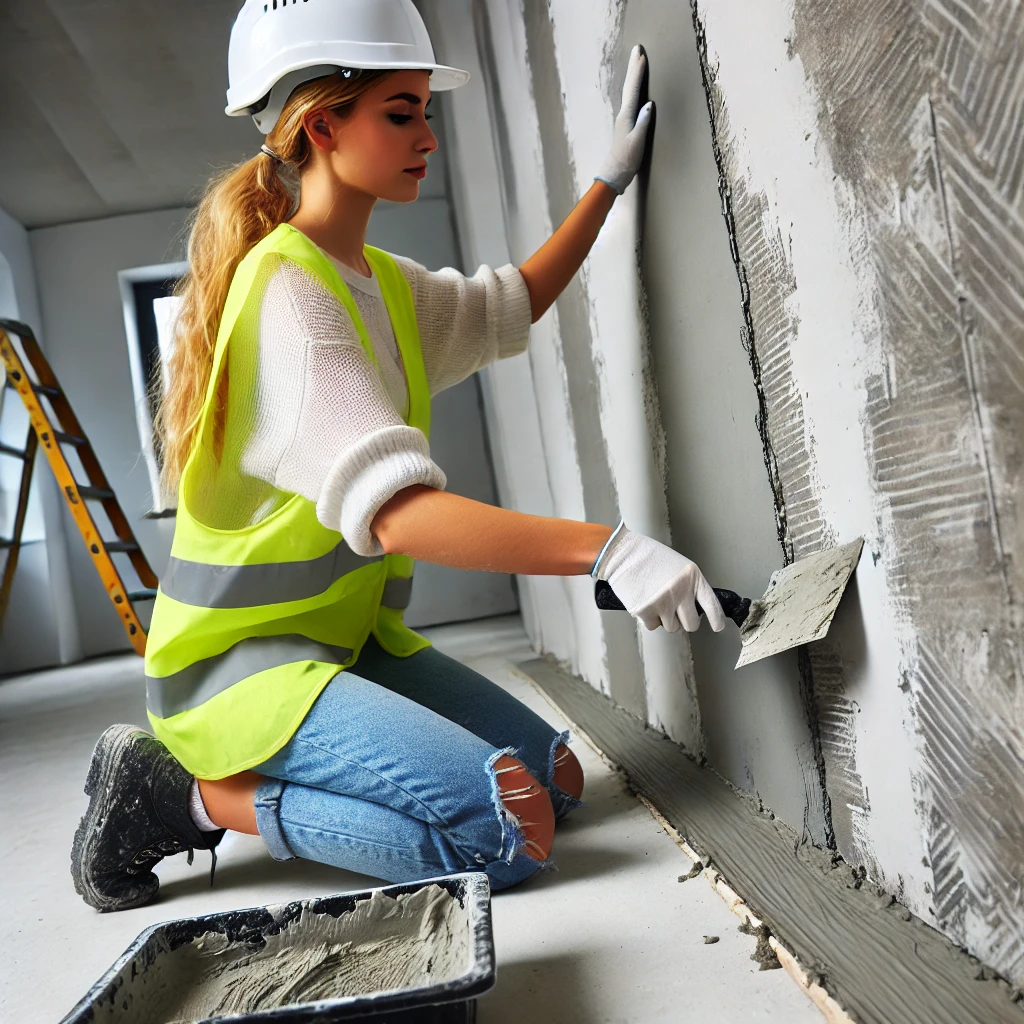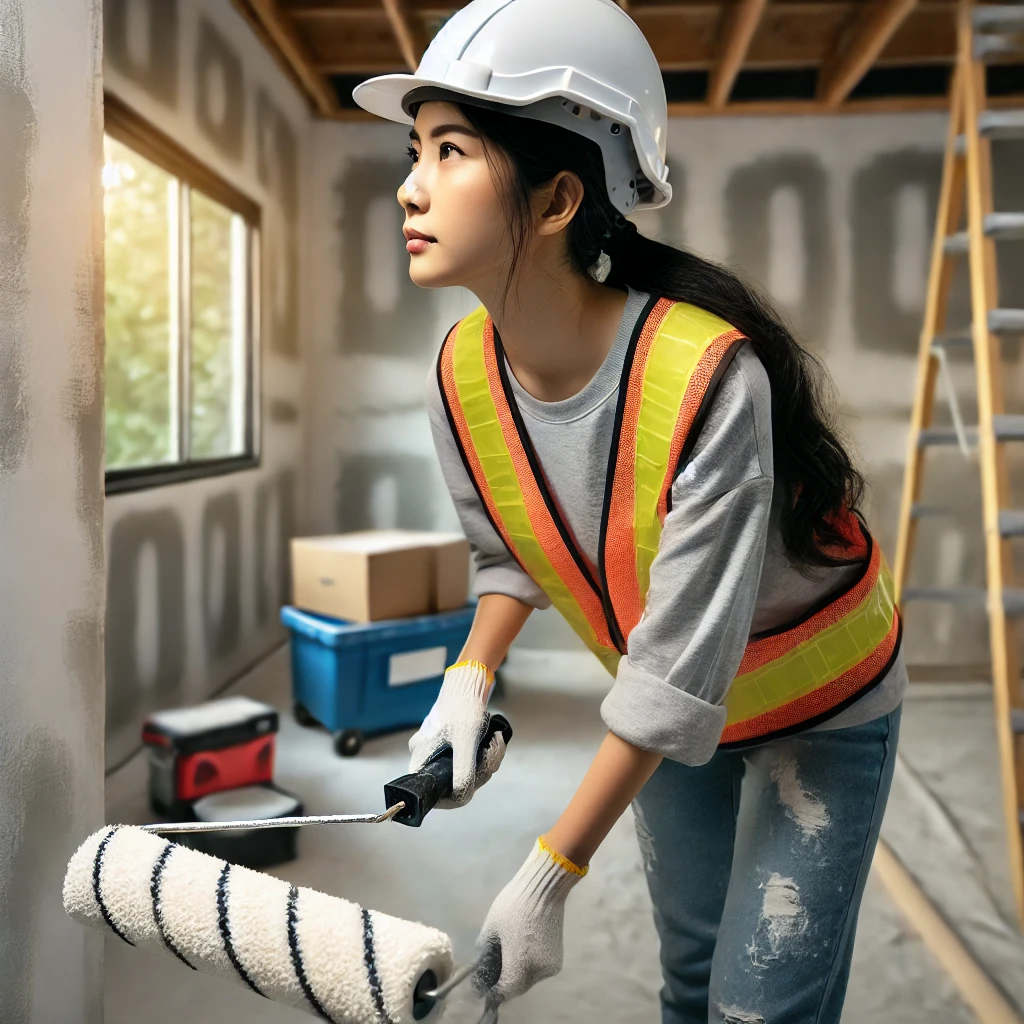
Check out our app!
Explore more features on mobile.
Insulation and Drywall Tasks
This section guides you through the **essential steps** of installing insulation and drywall. Proper insulation ensures **energy efficiency and noise reduction**, while drywall provides a **smooth, durable surface for interior walls and ceilings**.
- Track Your Progress: Check off each phase of insulation and drywall installation to stay on schedule.
- Stay Notified: Receive alerts for material deliveries, inspections, and finishing steps.
- Step-by-Step Guidance: Follow detailed instructions for installing insulation, hanging drywall, and finishing surfaces.
- Prevent Costly Issues: Learn how to avoid common mistakes that can lead to **poor insulation coverage, wall cracks, or uneven drywall seams**.
Whether you're installing **fiberglass batts, spray foam, or drywall panels**, this section provides the guidance needed to **ensure a well-insulated and professionally finished space**.

Material Selection and Planning
Choose **insulation materials** based on the building's **climate, energy requirements, and budget**. Proper material selection ensures **efficient heating and cooling, noise reduction, and long-term durability**.
Who to Hire:
Insulation Specialist
Cost-Saving Tips:
- Use **online insulation calculators** to estimate material requirements.
- Check for **local government rebates** on energy-efficient insulation materials.
- Buy insulation **in bulk** to reduce per-unit costs and avoid shortages.
Calculate the Required R-Value for Walls, Ceilings, and Floors
Determine the appropriate R-value based on climate and building size.
Why It Matters: Ensuring the correct R-value maximizes energy efficiency and comfort while reducing heating and cooling costs.
Who to Talk To: Energy Consultant, Insulation Specialist.
Contact Information (E.G. People involved with Task)
Choose Insulation Types (Fiberglass, Spray Foam, Cellulose, etc.)
Select insulation types that match the energy efficiency requirements.
Why It Matters: Choosing the right insulation ensures long-term performance, noise reduction, and energy savings.
Who to Talk To: Insulation Specialist, Building Engineer.
Contact Information (E.G. People involved with Task)
Order the Appropriate Amount of Insulation Material
Order enough material based on the required R-value and insulation type.
Why It Matters: Ensuring the right quantity prevents project delays and minimizes material waste.
Who to Talk To: Insulation Supplier, General Contractor.
Contact Information (E.G. People involved with Task)
Wall and Ceiling Insulation
Install **insulation in walls and ceilings** to improve **thermal efficiency and soundproofing**. Proper insulation reduces energy costs and helps maintain a **comfortable indoor climate** year-round.
Who to Hire:
Insulation Specialist, Skilled Laborers
Cost-Saving Tips:
- Rent a **blower machine** for loose-fill insulation to save on labor costs.
- Combine **insulation installation with HVAC sealing** for better energy efficiency.
- Use **recycled or eco-friendly insulation materials** to reduce costs and environmental impact.

Fit Insulation Batts or Rolls into Wall and Ceiling Cavities
Fit insulation batts or rolls into the wall and ceiling cavities for optimal insulation.
Why It Matters: Proper insulation improves energy efficiency and reduces heating and cooling costs.
Who to Talk To: Insulation Specialist, General Contractor.
Contact Information (E.G. People involved with Task)
Seal Gaps with Spray Foam or Caulk to Prevent Air Leaks
Seal gaps with spray foam or caulk to ensure there are no air leaks in the insulation.
Why It Matters: Preventing air leaks enhances insulation effectiveness and improves indoor air quality.
Who to Talk To: Insulation Installer, Energy Auditor.
Contact Information (E.G. People involved with Task)
Install Vapor Barriers Where Necessary to Control Moisture
Install vapor barriers to control moisture and prevent mold growth in the insulation.
Why It Matters: Proper moisture control prevents mold, improves air quality, and extends the insulation’s lifespan.
Who to Talk To: Insulation Contractor, Building Inspector.
Contact Information (E.G. People involved with Task)

Material Preparation
Prepare and purchase **drywall sheets and necessary tools** to ensure a smooth and efficient installation. Proper material preparation minimizes **waste, installation time, and costs**.
Who to Hire:
Drywall Contractor, Skilled Laborers
Cost-Saving Tips:
- Buy **bulk drywall packs** for discounts.
- Opt for **moisture-resistant drywall** in bathrooms and kitchens.
- Rent a **drywall lift** instead of purchasing if only needed for short-term use.
Measure and Calculate the Number of Drywall Sheets Required
Measure the walls and ceilings to calculate how many drywall sheets are required.
Why It Matters: Proper measurements prevent material shortages and excess waste.
Who to Talk To: Drywall Contractor, General Contractor.
Contact Information (E.G. People involved with Task)
Purchase Drywall, Screws, and Joint Compound
Purchase all the necessary materials, including drywall sheets and screws.
Why It Matters: Ensuring the correct materials are on-site prevents project delays.
Who to Talk To: Supplier, Drywall Installer.
Contact Information (E.G. People involved with Task)
Gather Tools (Drywall Lift, Trowels, Tape, etc.)
Make sure all necessary tools like drywall lifts and trowels are ready for the installation.
Why It Matters: Having the right tools improves efficiency and ensures a smooth drywall finish.
Who to Talk To: Drywall Installer, Construction Supplier.
Contact Information (E.G. People involved with Task)
Drywall Hanging
Attach **drywall sheets to walls and ceilings** for a smooth and durable surface. Proper installation ensures **structural integrity, easy finishing, and long-term stability**.
Who to Hire:
Drywall Contractor, Skilled Laborers
Cost-Saving Tips:
- Use a **drywall lift** to save on labor time and costs.
- Reuse **drywall scraps** for small patches or non-visible areas.
- Buy **bulk drywall packs** to get supplier discounts.

Cut Drywall Sheets to Fit Outlets, Windows, and Door Frames
Cut drywall sheets to the right size for openings and edges.
Why It Matters: Accurate cuts reduce waste and ensure a seamless fit, minimizing finishing work.
Who to Talk To: Drywall Installer, General Contractor.
Contact Information (E.G. People involved with Task)
Secure Sheets to Wall Studs and Ceiling Joists Using Screws
Secure the drywall sheets using screws to the wall studs and ceiling joists.
Why It Matters: Properly secured drywall prevents movement and reduces cracks in the finish.
Who to Talk To: Drywall Contractor, Skilled Laborers.
Contact Information (E.G. People involved with Task)
Ensure Sheets Are Flush and Aligned to Reduce Finishing Work
Ensure drywall sheets are flush with one another and aligned properly to minimize finishing time.
Why It Matters: Proper alignment minimizes joint finishing time and improves the final appearance.
Who to Talk To: Drywall Finisher, Site Supervisor.
Contact Information (E.G. People involved with Task)

Taping and Mudding
Install **drywall tape** over seams and joints and apply **joint compound (mud)** for a smooth finish. Proper taping and mudding help avoid cracks and improve the overall durability and appearance of the walls and ceilings.
Who to Hire:
Drywall Specialist
Cost-Saving Tips:
- Use a **drywall banjo tool** to apply tape and mud in one step, saving time.
- **Pre-fill screw holes** with compound to reduce finishing time.
- **Sand compound lightly** to reduce the need for excessive coats.
Apply Drywall Tape Over Seams and Joints
Apply drywall tape over seams and joints to prevent cracking.
Why It Matters: Proper tape placement prevents cracking and strengthens the joints.
Who to Talk To: Drywall Specialist.
Contact Information (E.G. People involved with Task)
Spread Joint Compound Over Tape and Screw Holes
Spread mud over the tape and screw holes to cover them completely.
Why It Matters: An even layer of mud ensures a smooth, professional finish without ridges.
Who to Talk To: Drywall Specialist.
Contact Information (E.G. People involved with Task)
Sand the Dried Compound for a Smooth Finish
Sand the dried compound to ensure a smooth and seamless finish.
Why It Matters: Sanding ensures a professional, flawless finish with no visible seams.
Who to Talk To: Drywall Specialist.
Contact Information (E.G. People involved with Task)
Drywall Finishing
Texture and prime the **drywall for painting or other finishes**. Proper finishing ensures a **smooth, professional look and enhances durability**.
Who to Hire:
Drywall Specialist, Painter
Cost-Saving Tips:
- Rent **spray equipment** for large areas to reduce labor costs.
- Use **multi-purpose primers** to save on material expenses.
- Buy **joint compound in bulk** for better pricing.

Apply Texture
Add texture to drywall using rollers or spray equipment as desired.
Why It Matters: Texturing adds a desired finish to the walls and may also help hide imperfections.
Who to Talk To: Drywall specialist or painter.
Contact Information (E.G. People involved with Task)
Prime the Drywall
Apply a primer to drywall to prepare it for painting or wallpapering.
Why It Matters: Priming ensures the paint or wallpaper adheres properly and lasts longer.
Who to Talk To: Painter or drywall specialist.
Contact Information (E.G. People involved with Task)
Inspect for Imperfections
Inspect for imperfections and apply additional mud or primer as needed.
Why It Matters: Imperfections can affect the final finish, so it's crucial to ensure a smooth surface before painting.
Who to Talk To: Drywall specialist or painter.
Contact Information (E.G. People involved with Task)

Drywall Inspection
**Verify proper insulation and drywall installation** to ensure a durable and energy-efficient structure.
Who to Hire:
Home Inspector, Drywall Contractor
Cost-Saving Tips:
- Perform inspections at each stage to avoid expensive repairs later.
- Ensure insulation is installed properly to avoid wasted energy costs.
Inspect for Gaps or Misaligned Insulation and Drywall
Ensure no gaps or misalignment in the insulation and drywall.
Why It Matters: Properly installed drywall and insulation ensure energy efficiency and a smooth finish.
Who to Talk To: Drywall Inspector, General Contractor.
Contact Information (E.G. People involved with Task)
Ensure All Materials Meet Local Building Codes
Verify that all materials meet the required local building codes.
Why It Matters: Meeting code requirements ensures safety, durability, and approval for the next construction phase.
Who to Talk To: Local Building Inspector, Drywall Contractor.
Contact Information (E.G. People involved with Task)
Obtain Approvals to Proceed to the Next Phase
Make sure to obtain all necessary approvals before proceeding.
Why It Matters: Ensuring all approvals are in place prevents costly rework and construction delays.
Who to Talk To: Building Inspector, Site Supervisor.
Contact Information (E.G. People involved with Task)
Your Tools
Access your tools to manage tasks, update your profile, and track your progress.
Collaboration Feed
Engage with others, share ideas, and find inspiration in the Collaboration Feed.



